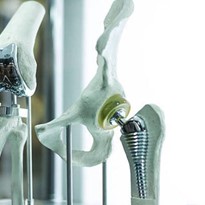The Cost of Inaction: Osteoporosis is a National Healthcare Crisis
Australia’s healthcare system is under increasing pressure, and preventing unnecessary hospitalizations should be a top priority. Osteoporosis-related fractures are among the most preventable hospital admissions, yet bone health screening remains severely underutilized due to regulatory concerns over radiation exposure.
This is despite the fact that:
- One in three women and one in five men over 50 will suffer an osteoporosis-related fracture.
- Osteoporotic fractures cost Australia $3.84 billion annually – and this figure is rising with our aging population.
- Patients who suffer hip fractures have a 24% increased mortality risk within a year – prevention is critical.
DEXA: The Gold Standard for Bone Health Tracking
The Dual-Energy X-ray Absorptiometry (DEXA) scan is the gold standard for measuring bone density and fracture risk, yet many healthcare professionals are unable to access this critical diagnostic tool due to restrictive policies and limited availability.
The concern? Radiation exposure.
The reality? A DEXA scan emits just one-third of the radiation a person receives in a one-hour flight at 10,000m.
Regulatory concerns over radiation safety should not be a barrier to bone health tracking, especially when osteoporosis-related fractures result in thousands of preventable hospital admissions every year.
The ROI of Prevention: Early Detection Saves Lives & Costs
?? Preventing a single hip fracture saves the healthcare system an estimated $66,000 in treatment and rehabilitation costs.
?? Early detection and intervention with DEXA scanning can reduce fracture risk by up to 50%.
???? Increasing access to DEXA scans can improve treatment outcomes, keep people out of hospitals, and reduce long-term healthcare expenditures.
 Breaking Down Barriers: Time to Rethink DEXA Restrictions
Breaking Down Barriers: Time to Rethink DEXA RestrictionsAt ATX Solutions, we believe in making life-saving diagnostic tools more accessible. As official suppliers of Osteosys DEXA systems, we help clinics, hospitals, and imaging centers integrate bone health tracking into their practice, ensuring patients receive the preventative care they need before fractures happen.


-720x400.jpg)
-720x400.jpg)
-160x160-state_article-rel-cat.png)



-160x160-state_article-rel-cat.png)

















-205x205.jpg)
